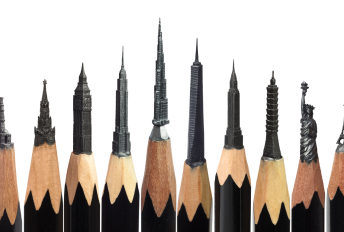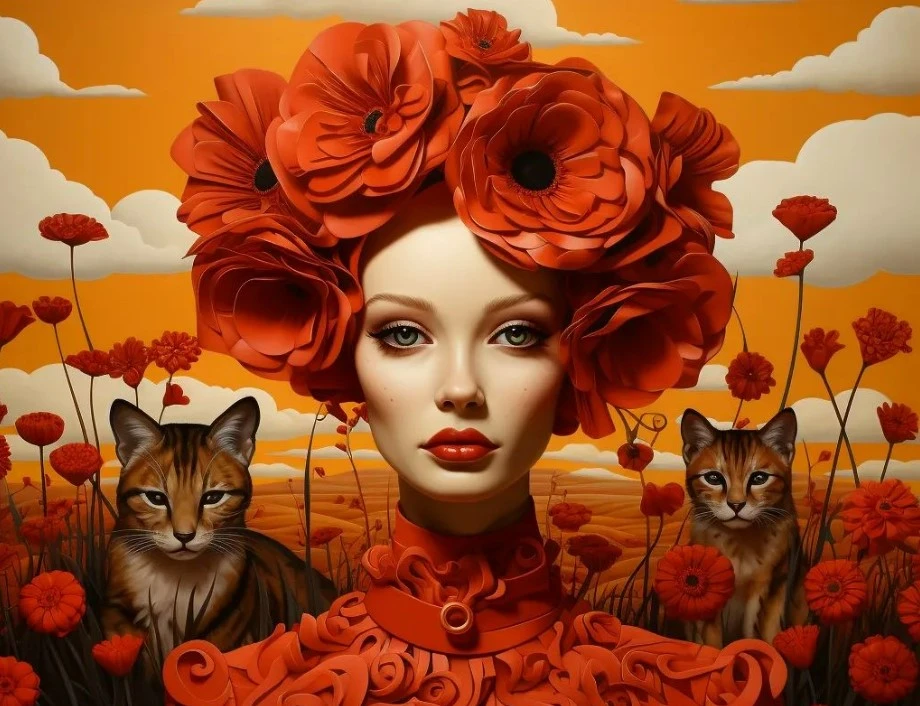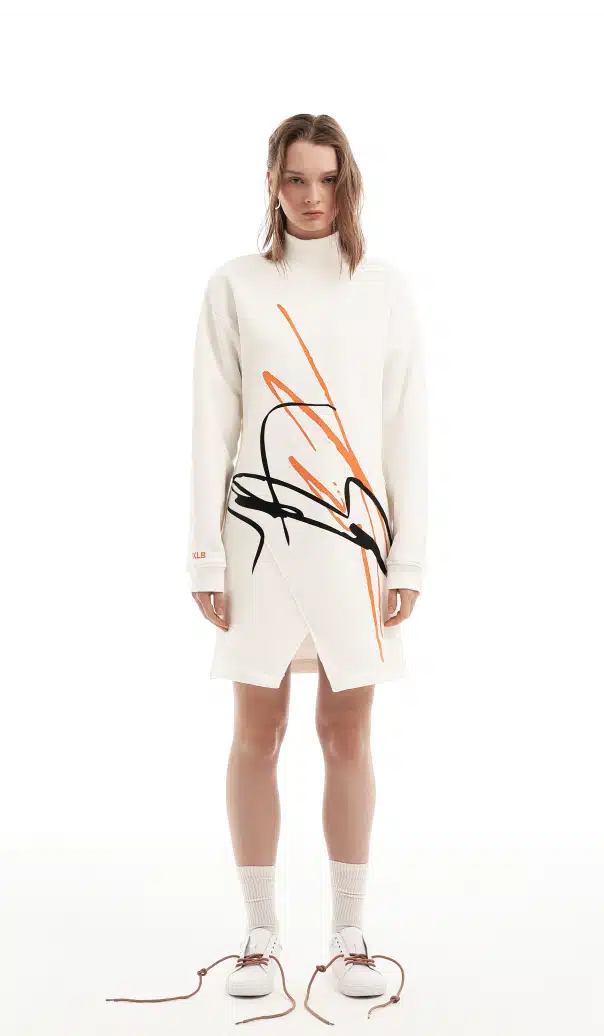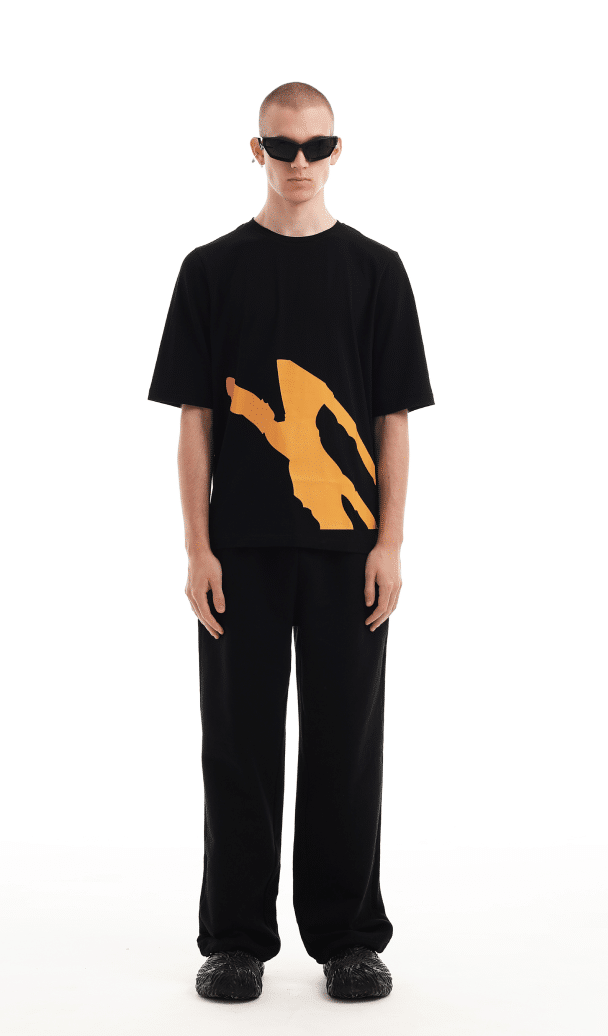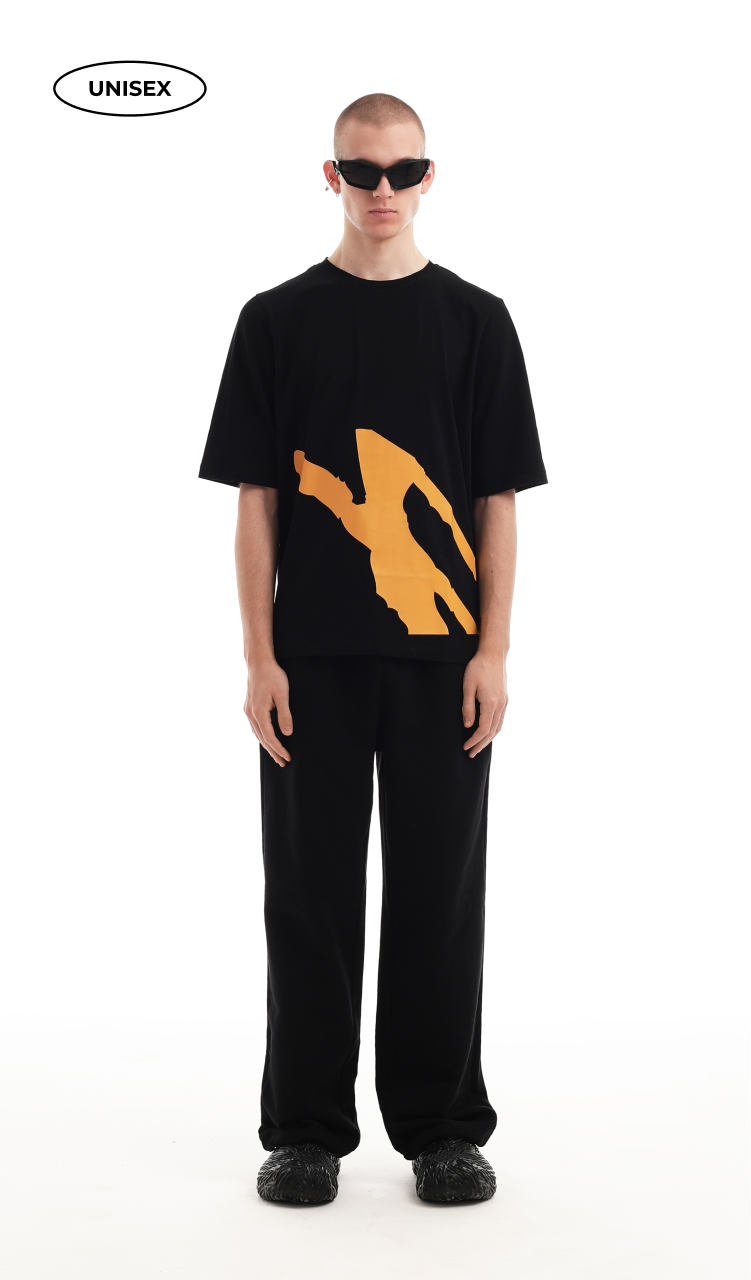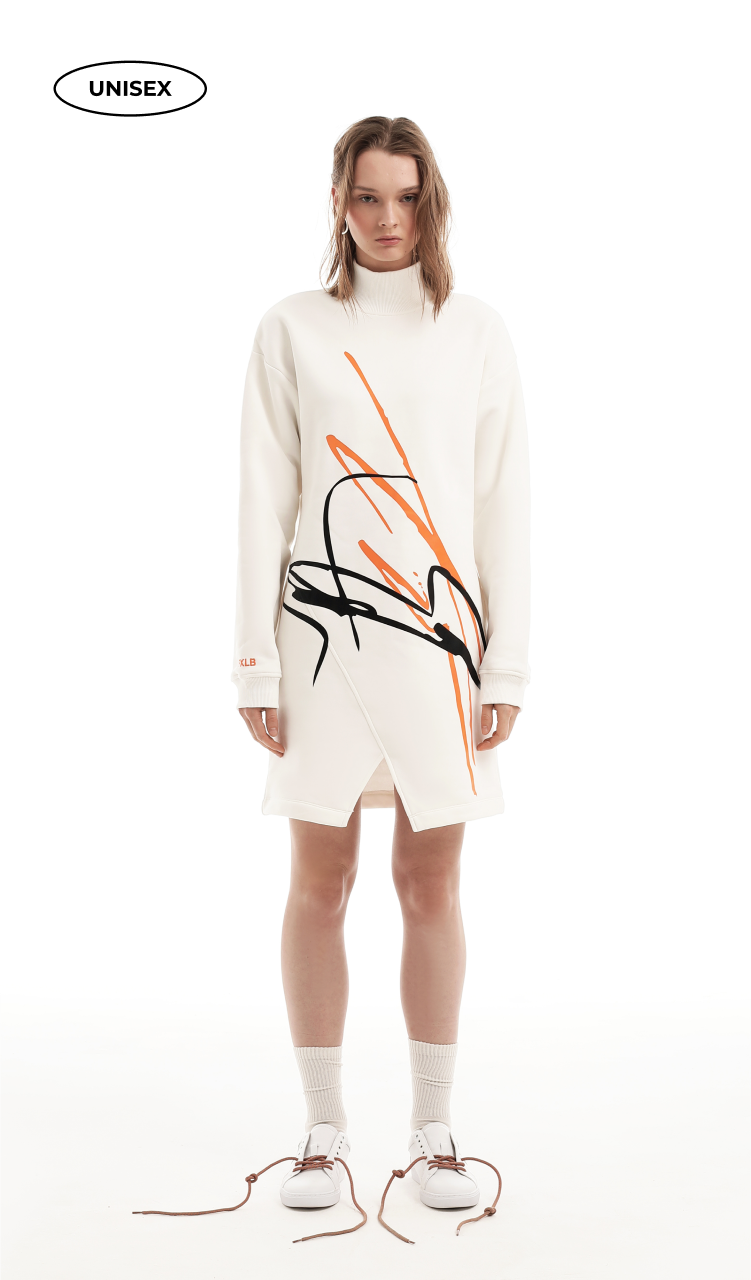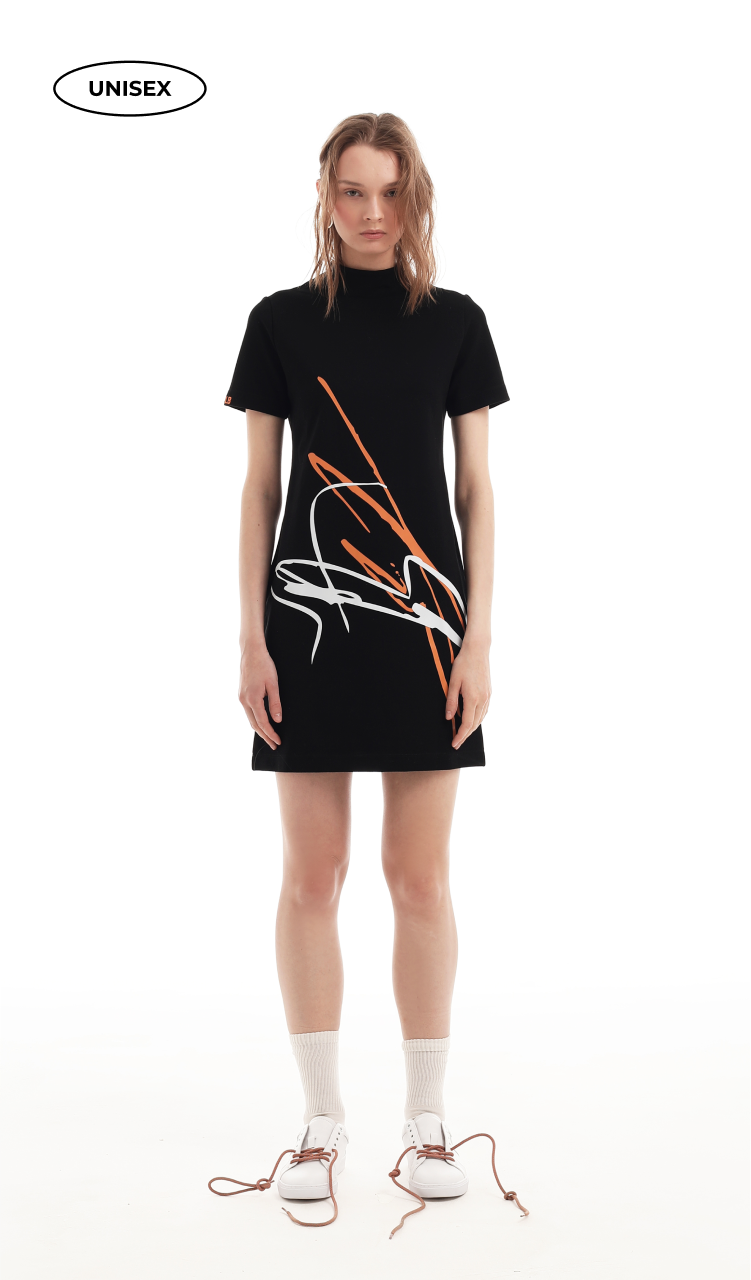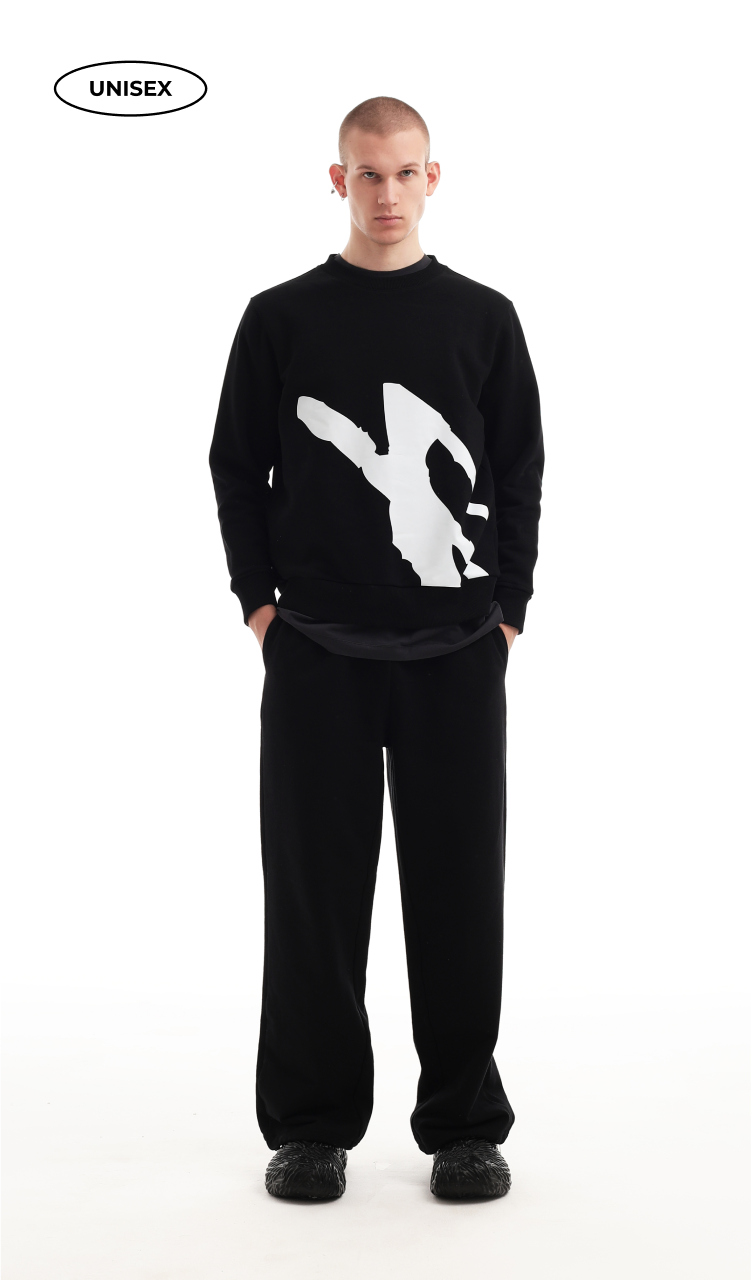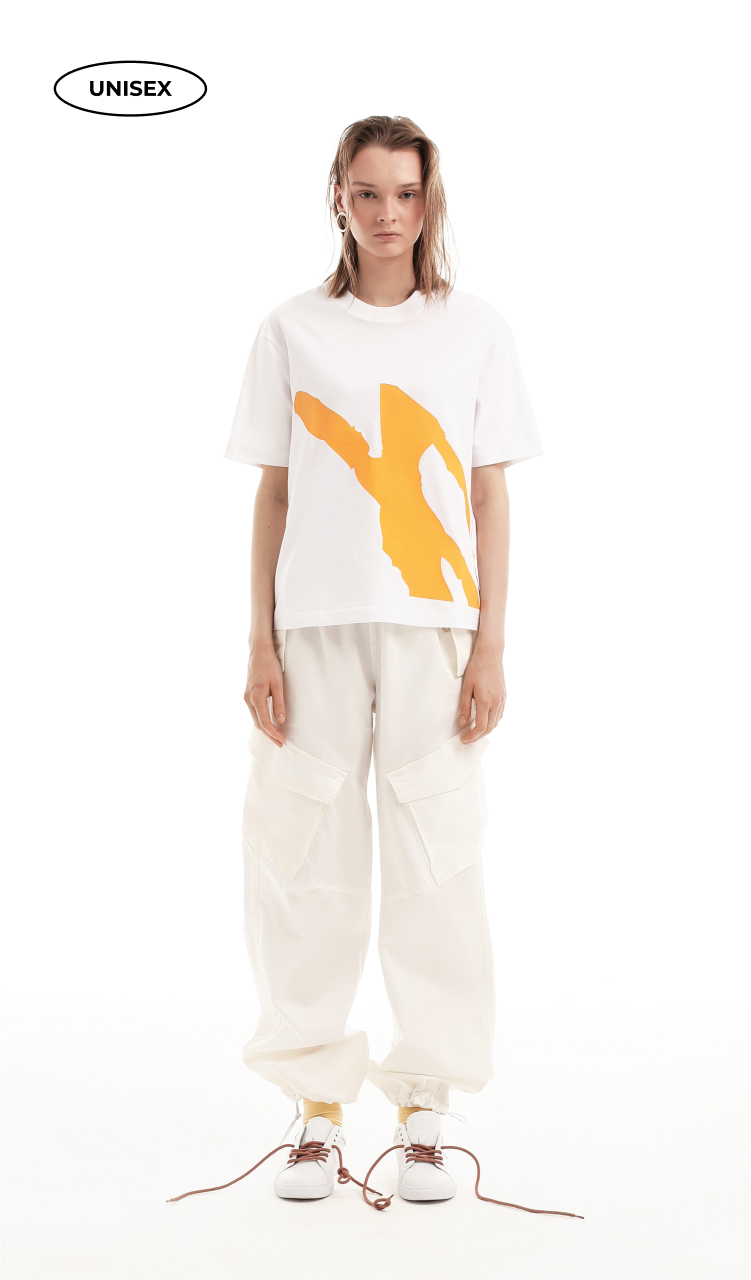Blog
WOODY MERT: CONFESSION OF AN ARTIST
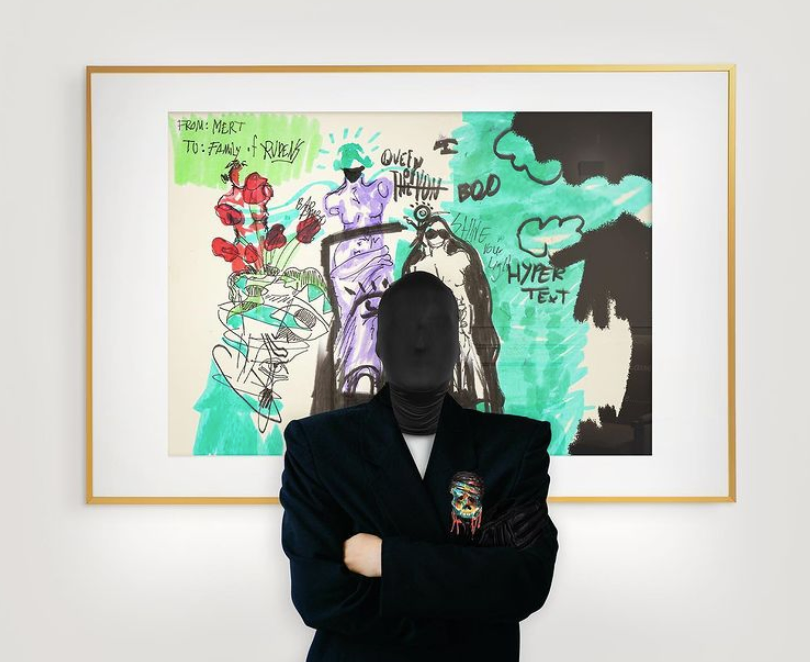
SHARE THE ARTICLE
Woody Mert is an incredibly promising young artist from Germany. He currently lives and studies Art and Media Informatics in Munich. With a background in academic fine art, Woody found his passion in digital and multimedia art.
His colorful abstract artworks contain strong deep messages, a kind of confession of an artist who has gone through a traumatic experience. He uses art as an escape from the outside world. Creating surrealistic and neo-expressionistic characters, his works depict memories, thoughts and feelings that he doesn’t share with anyone besides his canvas.
We truly believe that Woody Mert is on his way to being a great artist. Check out his intellectual art on his website and on his Instagram.

Can you share a bit about your background? How did you get into art?
As cliché as it sounds, I’ve been really into art ever since kindergarten. I grew up in Germany, hence why I didn’t attend a regular high school, but a visual art oriented grammar school, which is where I received traditional art training. I however was more interested in more expressive, colorful and “outsider” art, hence why my grades were rather bad in the beginning.
I also got a lot of backlash for my art from my teachers back then, hence why I started focusing more on traditional and naturalistic art during that time. In 11th grade I got a new art teacher who supported my expressive art and encouraged me to work more on those skills. That’s when art actually became my true passion, I’ve been creating art almost every single day since then.

Give me your personal definition of your style.
As mentioned previously, I received a lot of backlash from my teachers for my personal style and also because I was the only child of immigrant parents in the class. Because of that I used the canvas to compensate for my loneliness, expressing thoughts, memories and ideas others usually share with a best friend. Due to this my art style is usually wild, colorful, abstract and untamed.
That’s why I call my canvas a diary or a best friend I never had.
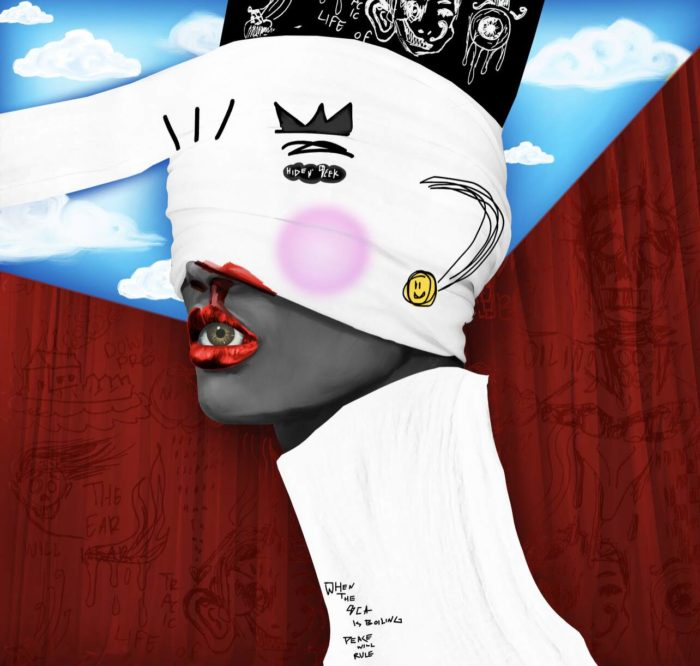
Your work reminds me a little of the Basquiat style. What artists inspire you?
It truly is an honor that you compare my style to such a legend in the art world. I actually created paintings directly inspired by his style 1-2 years ago, because I was so fascinated by his use of color and shape, that I wanted to learn from the best. And how can you learn better than by imitating the best?
As mentioned previously I received traditional art training, hence why I have a huge repertoire of artists that inspire me. Some of these include René Magritte, Andy Warhol, Wassily Kandinsky and the life story of Edvard Munch I also find very interesting. I also enjoy the work of contemporary artists such as Indi Sulta, Louise Bourgeois, Claire SIlver, Fewocious, and Antonio Lopez.
There is an opinion that all art is a kind of confession or sermon. What do you preach or confess to your audience?
I think everything we do or say is a confession of some form and reveals a part of our history and soul. Even though every single artwork is inspired by different thoughts, one message they all have in common is to not be afraid of sharing your thoughts and being wild, taking your experiences, whether they be good or bad ones, and turning them into beautiful artworks.
You wrote in the description of your work “Malfunctioning” that you had a traumatic experience at school. How did you cope with this difficult time? How did that experience affect you?
There’ve been so many incidents, which I can’t and don’t want to tell all, but I was the only child of immigrant parents in the class and as mentioned earlier very interested in art from an early age on. So while the other kids were playing outside, I’d constantly walk around with my sketchbook and draw. Because of this I became an easy target for the children and teachers.
There’s this one specific incident I recall, where I was doodling some characters in class and the teacher came up to me, took the paper away and started yelling at me in front of the entire class. She then furiously grabbed me by my arm and pulled me out of class and brought me to the principal, who then called my parents for making “disturbing” art.

There were also a lot of terror attacks happening in Europe around that time and whenever we’d talk about Turkey or Muslims, the teachers would almost always ask me in front of the entire class, what my opinions were on certain terror organizations, what my parents thought of them, what I’d think about certain verses in the Qur’an, what my and my parents political views were and all of these highly inappropriate things. Whenever I’d have a bad grade the teachers would come up to me and tell me, that I might not be able to finish high school and that I should consider alternatives such as apprenticeships to become a male nurse, since “Germany needs those” and that my future in this schools seems hopeless, whereas my other friend who had the worst grades in the class was always told to not be sad and continue going.
I even once had a teacher who openly said that he disliked me because I came from a none Christian family, when I told the coordinator of our school and asked her to put me in another class for that lesson, she told me that she would know this teachers for years and that he’s never been mean to her so she couldn’t believe that he really said that.
She accused me of lying and didn’t want to put me in another class, because it was “too much work”. All of this resulted in me growing up very isolated and in the beginning I used my art to compensate for my loneliness, until they’d make me feel so bad about making art, that I quit doing that until I got a new art teacher in 11th grade.
She was the most amazing human being and teacher, she encouraged me whenever and wherever she could and it is due to her that I became fascinated with art again.
Who has been the most influential person in your career or life, and how?
There’s been a lot of influential people in my life. As mentioned earlier, a lot of the adults in my life made me feel bad for creating art, hence why I kind of isolated myself from the rest of the world. I enjoy watching and analyzing people, I enjoy seeing how people, who didn’t grow up isolated from the rest, live and think. I’m inspired by almost every single person I meet.
The most influential people in my life so far however have been both of my parents, my art teacher in 11th and 12th grade and the stories of the Prophets in the Qur’an. My parents are immigrants and went through a lot of hardship, yet they never gave up and continued working at honest jobs and kept their faith and dreams.
My mothers work ethic is unmatched and absolutely unreal, my fathers logical thinking abilities are very admirable. They are the most loving people and I had an amazing upbringing. My art teacher in 11th and 12th grade was the first person to actively support and embrace my own personal art style. Up until then I didn’t think that anything I ever did was any good.
The Prophets stories are absolutely inspiring to me, because they experienced a lot of hatred and backlash from the people, yet they never let that hate ruin their hearts. They didn’t use that hate to have an excuse to be a bad human being or to not improve, instead they remained steadfast and faithful.

Which of your paintings are you most proud of and why?
I’m not proud of any of my paintings. The more I thought about it, the more I realized that pride is a very ignorant and destructive thing, which subconsciously boosts ignorance. If I start a painting I don’t know how it’ll turn out until it’s finished, hence why it seems pointless to me to take pride in something that is not in my hands.
There’s some paintings which I like more than the others, because of their history, meaning or simply because of the aesthetic. “Think Twice b4 you grab the Phone” is my very first NFT which sold for $1,215, hence why it has a special place in my heart.
I also really like my recent painting “Lost”, because it’s an exact representation of my feelings at that time or “Grace of a Champion”, because I like the colors and composition of it and because it shows my fascination for the pop culture of the 80s. It also has a very personal poem on it, which I wrote when I was 17.
Another one I really like is “Loving A Narcissist” not only because of the extremely personal meaning behind it, which is inspired by my own experiences, but also because I taught myself how to animate and compose music specifically for that piece. It is my very first animated painting and the background consists of pages from my very first sketchbook. My art teacher got me in 11th grade to encourage me to create more art.

You’ve painted both on canvas and in digital – how are these worlds similar and how are they different? Does one affect the other? And what led you to work in digital?
With digital paintings you have the ability to completely undo or erase parts of the painting, which you can’t do with physical artworks. On the one side this can be fun, since it takes a part of the pressure away. If you don’t like it, you can make it undone. On the other hand this is also a downside of digital art, since it takes the possibility of error away.
Errors and unplanned mistakes are an essential part in a lot of traditional artists’ works such as Nanne Meyer or my early work. Sometimes we’re so eager to perfectly communicate our vision in our head to the canvas, that we get stuck up. Errors break that fassade and enable us to think freely again and to work with mistakes.
Sometimes I like to hand sketch paintings, scan them into the computer and then digitally paint over them, so it’s a real collaboration between the digital and traditional.
The reason I initially got into digital art was very rudimentary to be sincere: I didn’t have any money or space for physical paintings. I was actually ashamed of this until a couple months later when NFTs started booming and I discovered amazing artists like Sabet, who are known for their digital work.
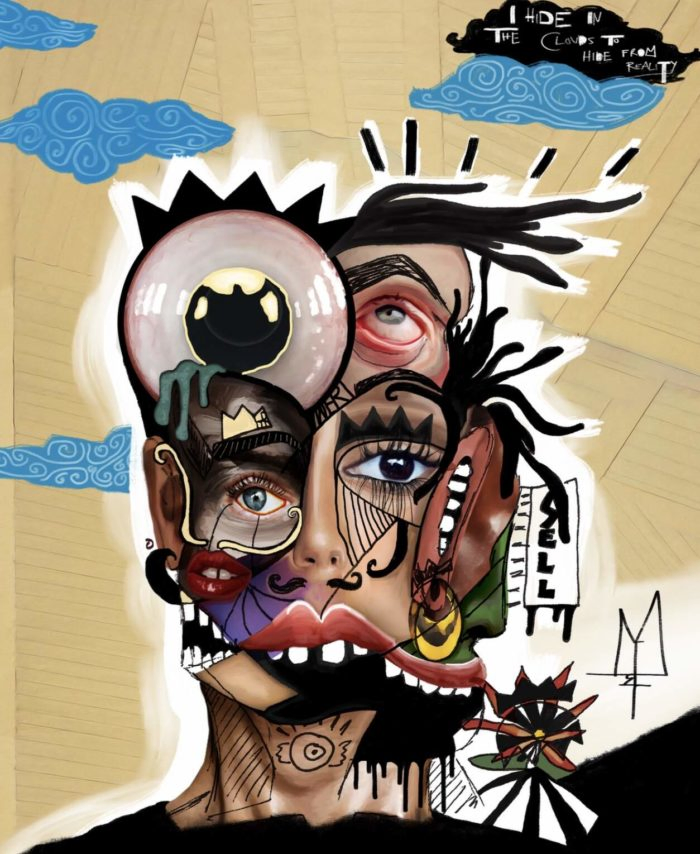
How do you see the role of NFT in contemporary art?
Regardless of the current state of the market, I am truly convinced that NFTs are the future of the art world or at least a big part of it. NFTs are everything artists have dreamt of since the beginning, selling your own paintings for a price that you determine and keeping most of the profit.
The only reason why the majority of people are so biased about it is because they don’t understand it or don’t want to understand it. Back when I first heard about NFTs, which was around february 2020, I didn’t understand it. NFTs were a rather small niche back then,
so there weren’t a lot of websites that explained it in an easy way either, hence why I didn’t get into the NFT business back then.
You sell your NFT on KnownOrigin. Why did you choose this platform?
I chose that platform, because it is more niche and thus better for emerging artists like me. One also has to go through an application process to be accepted, hence why it is not too overcrowded. They’re very supportive of 1/1 artists like me, whereas other marketplaces focus more on generative art for instance.
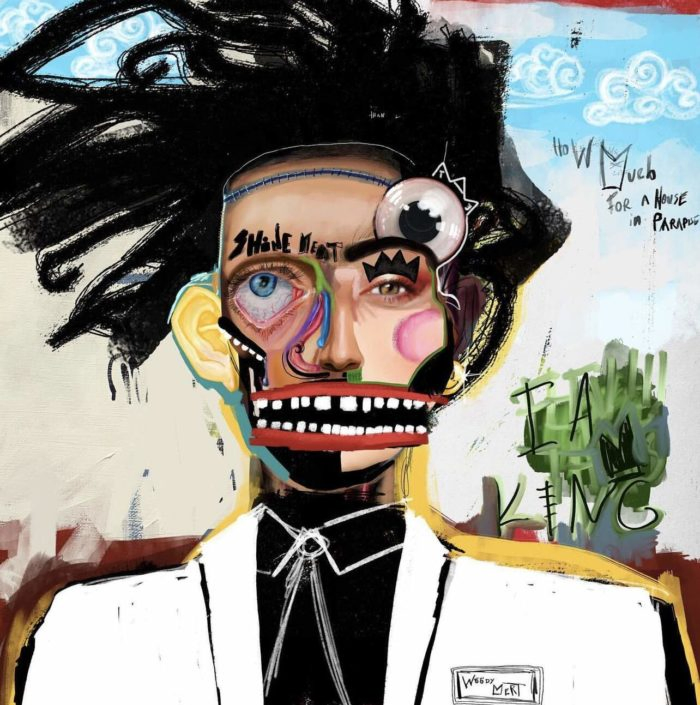
Share the last song, movie/series, book that inspired you.
As previously mentioned, I am really inspired by the Prophets stories in the Qur’an. I read it every single day and draw most of my inspiration from it. Life, the human mind, and people generally are very inspiring to me.
I was also impressed by Sinead O’Connors autobiography “Rememberings” in which she talks about the extreme abuse she suffered as a child, but yet never let those experiences ruin her heart. The way she talks about her mother and abuse due to narcissistic disorders is very
accurate. Most people portray such people as complete monsters and completely abusive people which couldn’t be further from the truth for most cases. These people are human as well, they act the way they act because of their own trauma and insecurity. They have good and bad days as well. It’s not as easy as labeling them as a monster and hating them for the rest of your life. Sometimes you love these people so much, you see them hurting and just want to help them and the best for them no matter what they do to you. Pete Burns in his biography “Freak Unique” also talks about a similar experience with his mother, which is another book that’s very interesting to read.
I’m a big movie lover and recently watched “Silent Hill” for the very first time and the way that movie is made is absolutely brilliant. The way they portray horror, the way the camera is positioned in certain scenes, the way the light effects add to the horror is genius.
Give advice to aspiring artists in digital.
I don’t know if I’m in the position to give advice to anyone, since I’m still at the beginning of my career and journey, but one advice I live by is “Life’s what you make it”. If you don’t have enough resources to create physical art, don’t be afraid or ashamed to move on to digital art.
Don’t make the mistake and think that your art is worth less because it’s digital, since there’s this misconception that digital art is easier (which it really isn’t) and thus worth less. Use the resources that you have and make the best out of it and don’t ever focus too much on numbers. The Instagram algorithm for instance isn’t made for artists. In order to be favored by the algorithm one has to post new paintings or pictures every single day, which for artists who paint their paintings without the help of 3D programs or AI is impossible and not healthy in the long run. Back when my engagement was low, I posted every single day and gained a huge amount of followers in a short amount of time. But I did that because I felt like doing it at that time.
Now I have a phase where I like to really spend more time on my recent artworks and post “only” a couple times a week and even though the algorithm doesn’t favor that, I have created some of my all time favorite artworks in the last couple weeks.
Those numbers don’t consider artistic value, hence why it is detrimental to think that the amount of likes says how good of an artist one is or isn’t.
COMMENT
LEAVE A COMMENT
Actually, this article could
be in your email
Featured materials from FOXYLAB MAGAZINE
are available in our newsletters.
Subscribe and get a dose of inspiration!
SHARE THE ARTICLE

more articles
International fashion icon and symbol of Parisian style, Ines de la Fressange is one of the most famous women in France.
A whole world on the tip of a pencil. The story of an artist who proved that true art has no limits and that it is never too late to start all over again.
Vitalie Burcovschi’s digital art captivates the soul and transports the viewer to a realm of boundless imagination and emotion. In his art, he creates…
Anastasia Pilepchuk is a Berlin-based artist with Buryat roots. She creates masks and face jewellery inspired by the nature and the culture of her beautiful region.

want to share your story
with the world?
We're open to collaborating with creative and talented individuals like you. Leave us your email below, and let's connect for interviews, articles, and more.
don’t miss!
New drop
foxylab ny x Edward Acosta
New drop FXLB x Edward Acosta
A thin edge of seduction and the consumerism fetish is thoroughly blurred in Acosta’s art in the use of both light, and dark tones. Bold lines serve as a fashionable juxtaposition of a peaceful dream-like state and a vivid color, representing action and presence in the moment.
International fashion icon and symbol of Parisian style, Ines de la Fressange is one of the most famous women in France.
A whole world on the tip of a pencil. The story of an artist who proved that true art has no limits and that it is never too late to start all over again.
Vitalie Burcovschi’s digital art captivates the soul and transports the viewer to a realm of boundless imagination and emotion. In his art, he creates…
Anastasia Pilepchuk is a Berlin-based artist with Buryat roots. She creates masks and face jewellery inspired by the nature and the culture of her beautiful region.



